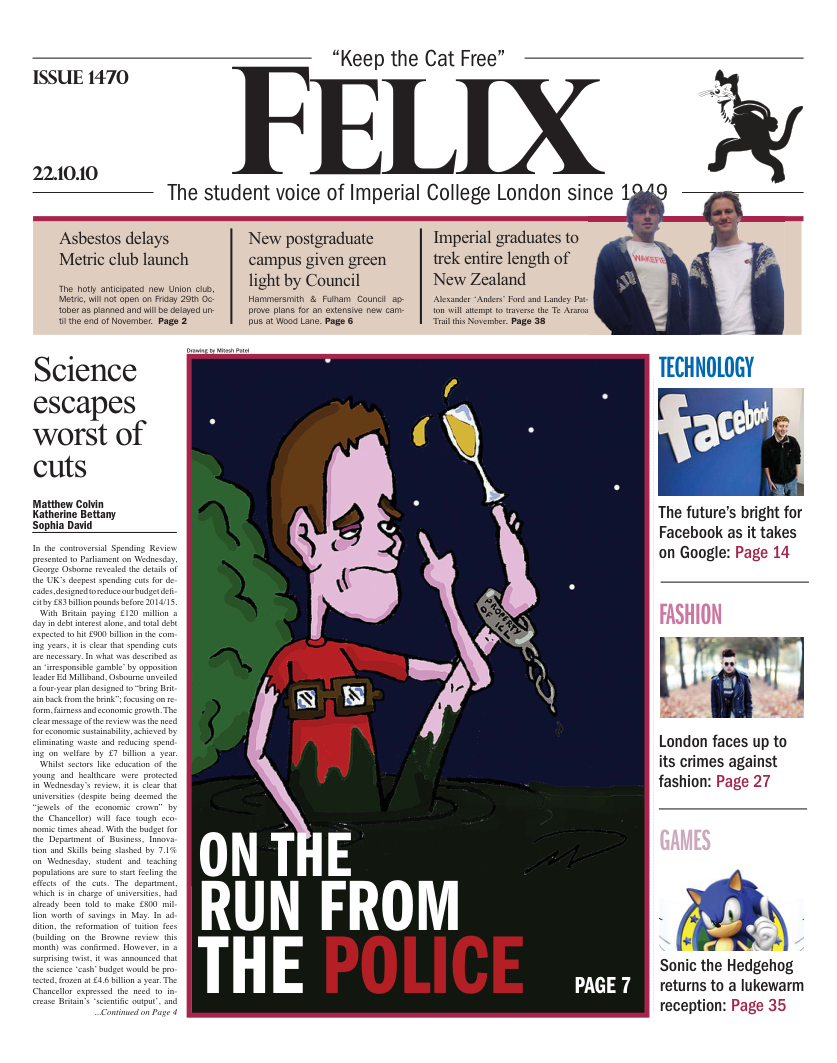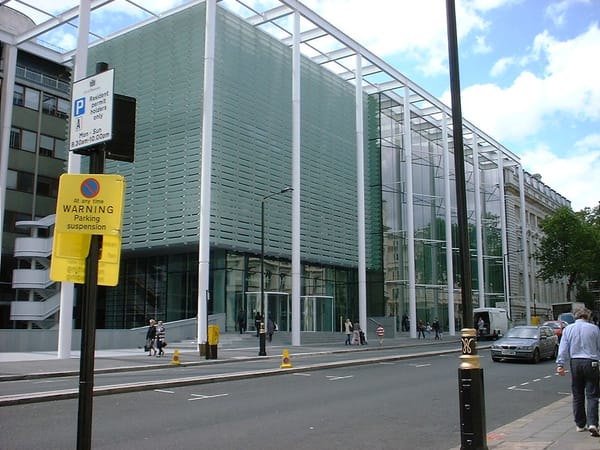Did Physics break the economy? Can it save it?
The role of mathematical methods in the explosive cocktail that led to the greatest economic meltdown in generations and questions their future

At the apogee of the mathematical finance movement in the mid nineties, billions were being made by pioneering science and finance academics and those who had the foresight to see the increasing use of these techniques. Louis Bachelier, the informal father of the discipline about a century ago would have been proud. Bachelier speculated that because of the ‘memorylessness’ of stock market noise (that is, events that momentarily alter the price of a stock in a way that does not reflect the general sentiment of the markets), stock price increments are completely independent and able to be modeled by a Gaussian distribution. Even after this was postulated, academics were still unaccustomed to witnessing mathematics solving problems in finance. Now, however, a large slice of this so-called quantitative finance draws inspiration from the physical sciences, seen by some purists as a pristine and sacred discipline. Physics, not unlike finance, concerns itself with a seemingly infinite set of parameters, constantly changing and evolving; completely dynamic, so its use in the field is not as far a cry as one may have initially thought.
In the good times, nothing could seemingly go wrong. In 1994, eleven prominent academics, bankers and financiers came together to form Long Term Capital Management (LCTCM), a highly mediatic hedge fund in Connecticut. The superstar team included Myron Scholes who co-created and published the famous “Black-Scholes Option Pricing Model”. Given the experience of the partners, all evidence pointed to LTCM becoming the most successful financial institution of all time, and the first few years of activity lulled investors and the markets into a false sense of security given returns in excess of 40%. It was seen to be the epitome of quantitative finance since Bachelier’s initial paper. The Oracle of Omaha, Mr Warren Buffett himself, called the derivatives used by houses like LTCM “weapons of mass destruction”. At the time, he could not have foreseen the extent to which his words would become true. The financial world slowly but surely began succumbing to the flaws in the models.
Chaotic, scared, unruled, disrespected, anarchical, greedy, uncertain, meltdown, unfinished, prophetic; these are merely a few groups of letters that spell the sentiment of a world suffering a broken economy and spirit. The beginnings: well known; a significant increase in mortgage defaults in the United States. The consequences: immeasurable; trillions of dollars of financial devastation, corporate collapse, record low consumer confidence; possibility of deflation. In order to raise funds to lend money, mortgage providers repackaged their debt in complex financial products which they sold to supposedly responsible banks, ensuring the ratings agency gave these investment vehicles very high ratings, falsely deeming them suitable and a worthwhile investment. The banks themselves increased the complexity of these products and sold them on to investment funds with an appetite for supernormal returns and a carefree attitude towards risk.
There are some who blame the high level and complexity of the mathematics involved for the crisis. Professor L.C. Thomas of Southampton University suggests that the crisis we are now feeling was created not necessarily by the mathematics but by an explosive combination of “greed and a conspiracy of optimism”. The exoteric models created by the physicists and mathematicians had actually worked surprisingly well in identifying problem areas in the debt merry-go-round. The models, however, were possibly far too complex for anyone other than their creators to understand, meaning that the average mortgage salesman felt detached from the process and became unwilling to ‘listen’ to an abstract mathematical formula and became an irresponsible lender.
It is almost undeniable that mathematics has had a tremendous impact on the crisis and is one of its catalysts. The extent, however, is considered by leading academics somewhat limited. Dr. Dorje Brody, a reader of mathematics and researcher in financial mathematics at Imperial College believes the models are only to blame as they allowed products “whose contents are quite obscure to be traded” when their prices were being quoted on an “ad-hoc” basis.
The consensus lies in the understanding that no matter what role the models played in the downturn of the economy, mathematics will be instrumental in fixing the situation. Dr Brody thinks that that it will however depend on “whether people come to the realisation that model building at a phenomenological level is feasible” in the world of finance.
There is a widespread sentiment that financial institutions have ransacked and wrongly appropriated the techniques developed by physical scientists and mathematicians. Many believe that those who learn the ideas of physics and mathematics and manipulate them for use in the financial markets are, in one way or another, deviants of sorts, selling out their ‘sacred’ science. It’s almost like a Dr Faustus meets Mephistopheles scenario. The truth, however, is that in a not so far-fetched way of thinking, physics and finance are in fact much more related in essence than one may initially postulate. Scraping the possibility of malicious intent from either front, it is then possible to come to the somewhat abstract conclusion that while both deal with very fundamentally different ideas, the two share a very paramount synergy. Both fields aim to advance knowledge, evolve science and help ensure that the perpetual curiosity of mankind does not cease.
More importantly, they help observers gain a view of the world that throws a welcome helping hand in making life better for a myriad of people. Given the accepted view that quantitative finance is here to stay, the necessity lies not in accepting that it draws from methods in the physical sciences, but rather engaging in a symbiotic relationship with the best minds in the field. Perhaps we will go back to a simpler time and a financial system where the level of mathematical exoterism is diminished and people become once again the drivers of the markets and economy instead of an obscure formula developed in a small room on the 54th floor of a sky-scraper in New York City.







